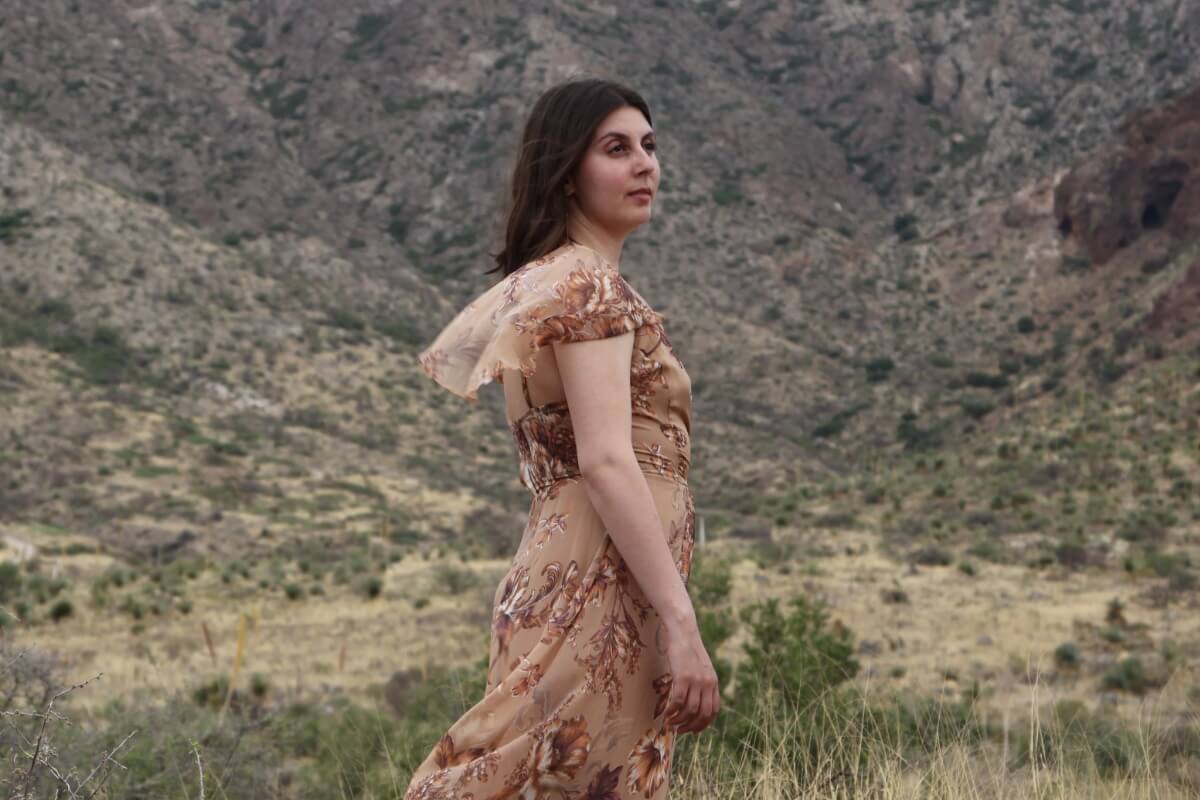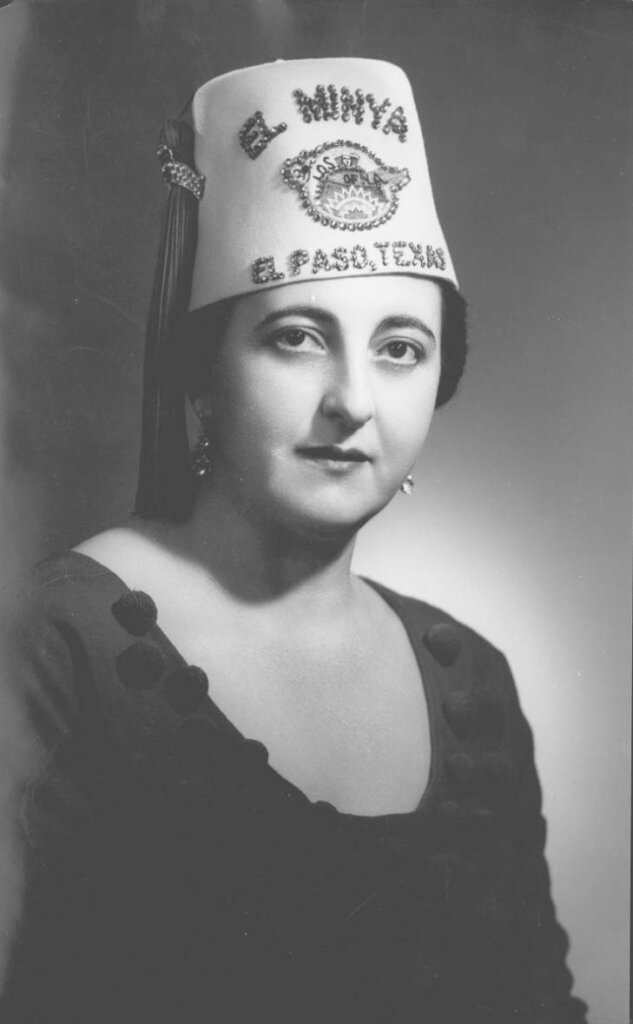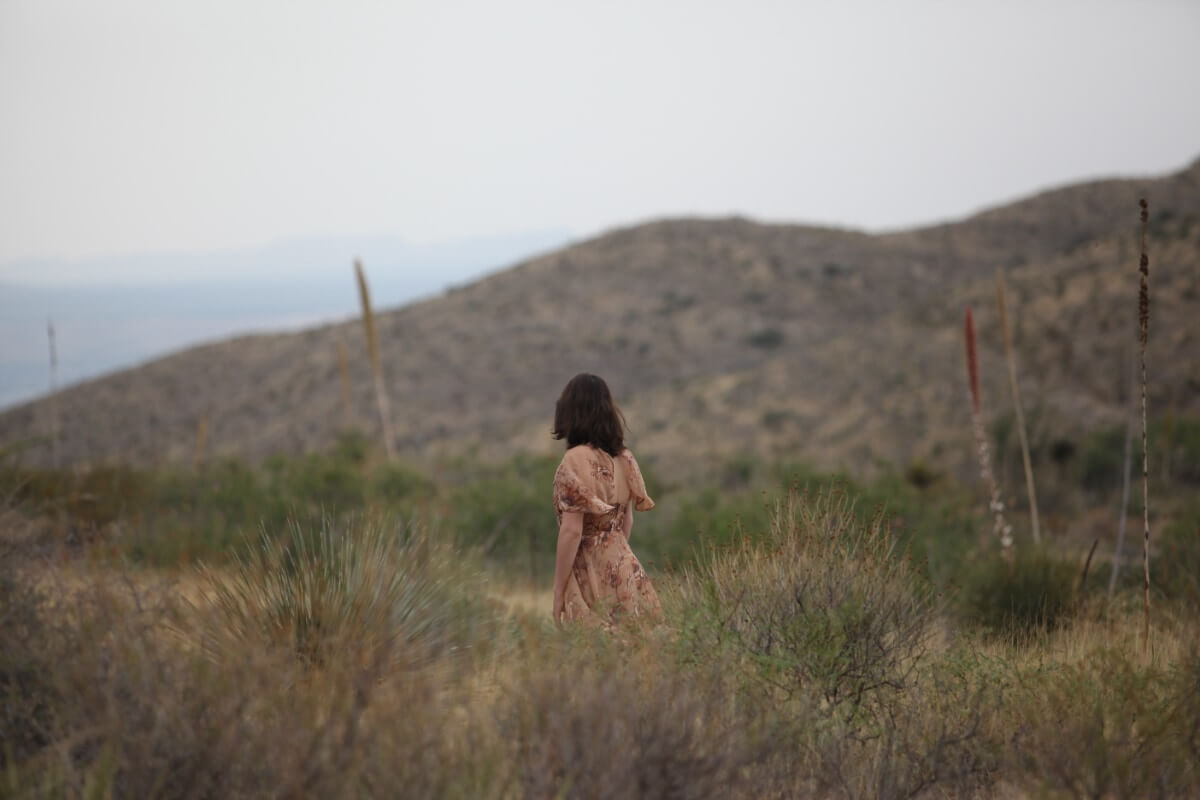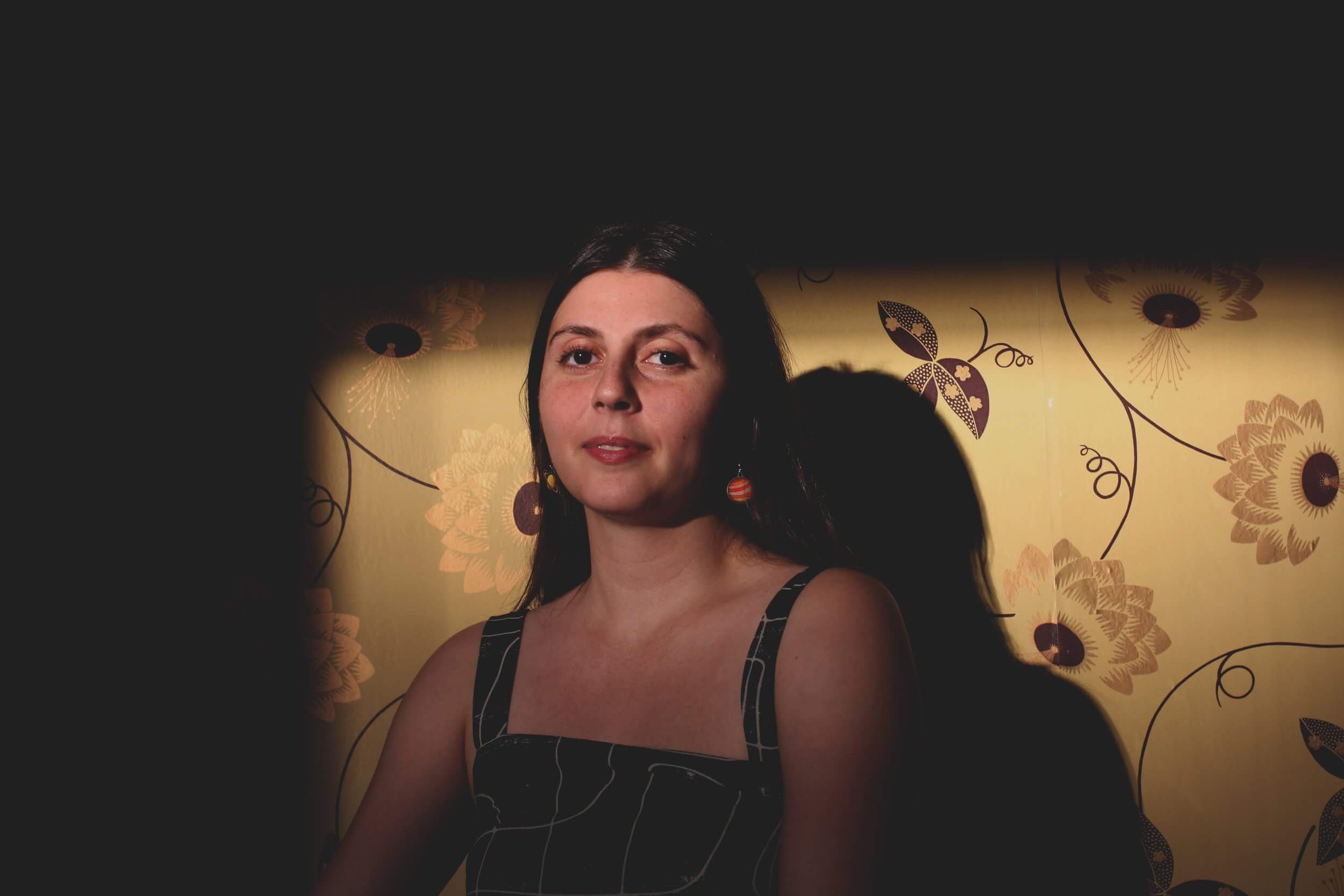“Yenobak Eih?”
(What Do You Get?):
Syrian and Mexican Cultures Come Together in Árabe
By Amanda Ekery
• 8 minute read

2024 Creation Fund artist Amanda Ekery’s new work, Árabe, is a collection of twelve original songs about Syrian and Mexican shared culture, with accompanying essays that tell the history and stories behind each song. Ekery and her band will be performing the songs from Árabe over the next two years in The Mahrajan Tour thanks to support from the Creation Fund. The tour begins on May 23rd with a live performance as part of the New York Arab Festival, then travels to multiple cities including El Paso, Oakland, Houston, Dearborn, and New Orleans. You can see upcoming performance dates on the artist’s website. Árabe releases May 9, and the album and book of essays are available online.
Here, Ekery talks about two of the songs from Árabe. In the accompanying essay, she tells the story of how the project began with the discovery of a collection of Arab-American song records and home records from the 1930s and 40s in the back of her grandmother’s closet.
My fourth full-length release, Árabe, invites audiences to explore Syrian and Mexican shared history and culture on the El Paso border – the story of my life, lineage, and identity. It features twelve original songs covering everything from food, gambling, and evil eyes, to immigration law, biracial identity, and the fraught relationship between immigrant entrepreneurship and workers’ rights.
Here are the stories behind two of the songs from the album.
“Yenobak Eih”
In the 1940s, Alamphon records were recorded and produced by local Arab artists, then advertised and distributed to Arab Americans across the U.S. from their home base on Atlantic Avenue in Brooklyn. The beginning of the song includes an 80-year-old home recording of my great-gido.
“Stitching”
El Paso at one point in time was the leading manufacturer of men’s pants in the US thanks to The Farah Company, which was started by two Syrian brothers. “Stitching” touches on workers’ rights and immigrant entrepreneurship, and focuses on my grandma, a seamstress at Farah’s during the 1970s Chicana-led “Strike of the Century.”
“Yenobak Eih”
Reprinted with permission from the book Árabe by Amanda Ekery
Buried in the backroom closet of my grandparents’ house sat their dusty record collection, sagging on the top shelf, shut away from use. They had long ago gotten rid of their turntable. Along with their Willie Nelson, Fats Domino, and movie musical soundtracks, was an aged dark brown home record album with a fleur-de-lis type imprint. “Those belonged to my mother,” my sito commented as I pulled the album down. “She would order records from a catalog and have them sent here.”
My great-sito Olga enjoyed getting dressed up in her fur coat and going out in downtown El Paso; she loved gambling and boxing matches, even knocking out one of my uncles when he was late coming home, and played in the local Drum and Bugle Corps of El Minya Court Ladies Oriental Shriners drumline for which she was also the general chairman of arrangements. From the stories I’ve heard about her, she liked having a good time, and it’s no surprise to me that music was part of her thrills.
I gently opened the cracked binding. Inside the home album were 78 RPM records. Her saved records were mostly from the Alamphon record company, one from Sun Records, one from a St. Jude’s Hospital fundraising event, and several home recordings on acetate disks with the lacquer coating chipping away.
The Mahjar was an “Arab Renaissance” movement started in the United States by Arab writers who had immigrated from the Ottoman Empire.
In Little Syria there were three Arab American record labels: Maloof Phonograph Company, A.J. Macksound’s Phonograph Company, and Alamphon Records, which produced records from the 1930s to 1940s. Between 1890 and 1940, Little Syria in New York City was a community hub. The three-block radius, near present day Washington Street, had everything from Syrian newspapers, magazines, restaurants, and grocers to churches, banks, record stores, and barbers. Richard Breaux, writer of the blog “The Recorded Sounds of the Syrian/Lebanese Diaspora at 78 RPM,” refers to this area as the Mahjar, the start of America’s Arab diaspora. The Mahjar was a movement started in the United States by Arab writers who had immigrated from the Ottoman Empire. It was an “Arab Renaissance” whose figures were fueled by their encounters with the Western World. This is where Olga read about and ordered her records.
“How old are these?”
My sito tilts her face in thought getting up from her recliner. “Let me see…probably 80 years now.”

“Can I borrow them? I can digitize it all and bring them back.”
“Digitize?”
“You know, put them on the computer to make a CD or just an mp3 file.”
“Wullah, you can do that?” gesturing at me in disbelief. “Just take them. We don’t use them.”
“Are you sure?”
“Yes! Too much junk in this house!”
She put a strip of duct tape on the album spine to prevent further splitting, and wrapped it in bubble wrap and old grocery bags for the journey in my suitcase.
Back in New York, I very carefully unpacked the album and began slowly sliding each record out of its paper sleeve, placing them on my turntable one at a time. They were scratchy, heavily used, roughly edited, and distorted in places. I loved them.
“Yenobak Eih” was the first record I played. The Alamphon logo painted on the record’s center label features a drawing of a pyramid with a camel next to some palm trees. Arab American musicians at the time played into orientalist tropes for marketing, with record packaging showcasing camels, pyramids, and belly dancing ladies. Below the logo reads the track name in Arabic and English, the performer, and the identification number of the take, record number, and side. It opens with a man speaking in Arabic: “almutribah Sana,” telling the listener, or most likely the recording engineer keeping track of takes, that the singer is Sana. Then the music opens with a derbake drum beat, followed by strings playing a bouncy scalar melody, arriving at Sana’s entrance which is strong and steady behind the warped decay of time.
Over the following weeks, I played it over and over again, transcribing the lively, joyous, and celebratory music, and translating the lyrics, which are about pain, confusion, and heartbreak. I loved the juxtaposition within the music and lyrics, and began highlighting this deception in an arrangement of my own.
Translation of Yenobak Eih:
What do you get out of hurting me
Your love is a fire
In you, you have a secret
This adds to the fire
Isn’t it enough to torture me
Explain to me, what do you get
My entire life, I’ve been living for you
Talk to me, may God save you
Explain to me, what do you get
What do you get out of hurting me
Your love is fire that lights me on fire
In the 1950s, Little Syria and lower Manhattan were changing and many Arab people began moving to Brooklyn. Sahadi’s and the Damascus Bakery, two Arab grocery stores, are still on Atlantic Avenue today. Alamphon Records moved across the street from present day Sahadi’s and recorded local Arab American musicians to serve the emerging Arab American population. With the first wave of Arab immigration to the United States, Columbia Records also saw an opportunity to cater to the growing population and started an “E series,” the E stood for “ethnic.” However, the Alamphon record company had the advantage of knowing the market, understanding where to advertise, like in Syrian World, a newspaper publication specifically for Arab American families in the United States. Alamphon Records were produced and recorded by Arab artists, then advertised and distributed to Arab American families across the United States, including New York City, Detroit, and El Paso, where my great-sito bought them.
“Yenobak Eih” opens with a derbake drum beat, followed by strings playing a bouncy scalar melody, arriving at Sana’s entrance which is strong and steady behind the warped decay of time.
The lathe-cut acetate home recordings in the record book were in various states. All of them were chipping, but some I could play while others I haven’t been able to remove from the sleeve for fear that they would just crumble. These records have messy scrawled Arabic handwriting on the label which I can’t decipher. You can hear a mix of Spanish and Arabic conversations, the phone ringing, and arguments in the background, all behind the recorded live music.
“Hi Sito, I’ve been listening to the records you gave me and there are some home recordings in here. Do you know who is singing in these?”
“Oh no, let me hear.”
Placing my phone to the speaker, she listens.
“Hmm maybe Jeanette? She always thought she sounded so good.” I can hear the eye roll in her voice. “…I don’t know though.”
“That’s ok, what about this man talking?”
I play a section of a man speaking Arabic then switching to Spanish to say “cantar bueno.”
“That’s my daddy! Oh yes,” softer, “that’s him.” Sobs creep onto the line.
I digitized all the records, burned four copies onto CDs, and mailed them to my sito and her sisters. From the digital home recordings, I edited snippets of the background conversations and sounds that illustrated life through audio. There are sounds of laughter, compliments, multiple languages, and music that is not at the professionally recorded level of the Alamphon recordings, but played by family members who used music as a source of entertainment and to gather. These bits of audio have a character of their own: one featuring an unsteady piano chorus, another featuring the mystery vocalist over a violin drone, and another with my great-gido Fahim announcing into the recording, “From my little cousin, memories from your relatives in El Paso, Tejas.”
What do you get? Yenobak eih? There was no way of knowing that your great-granddaughter would be a musician who lives in a borough where you used to order records from, that she’d have your records, and create compositions and arrangements based on what you’ve saved. There is no way to know what you get, until it’s happened. I’ve rearranged “Yenobak Eih” and home recordings from Olga’s record collection, but my intent is that the moment is still present, that there is a sense of what it was like to listen and be in the room, and that what you get is a memory.

About Amanda Ekery

Vocalist, multi-instrumentalist and composer Amanda Ekery weaves her experience in improvisatory creative music, research, and jazz into her compositions, workshops, and performances. Her work has earned support from The Jerome Foundation, National Performance Network, New Music USA, has been featured at the Portland Jazz Festival, Panama Jazz Festival, and the Kennedy Center, and spans Off-Broadway theater, film, and multiple critically acclaimed studio recordings.
Árabe is Amanda’s latest release about Syrian and Mexican shared history and culture on the El Paso border. Other recent work includes Amanda’s album Keys With No Purpose, written as a reaction to the sexist culture women continue to face in jazz, and Some Short Songs / Some (more) Short Songs, which are part of Amanda’s ongoing song cycle that features the whimsical nature of her writing.
Amanda is a dedicated teaching artist and avid researcher. She is the founder of El Paso Jazz Girls, a non-profit organization for young female musicians that serves as a direct, practical intervention for gender equity in her hometown jazz community and which earned Amanda the Jazz Hero Award from the Jazz Journalist Association. Her most recent research “Exclusion and Pushout: Females in Jazz Education” has also informed her teaching practice and El Paso Jazz Girls’ curriculum. Amanda has been invited to present her research at the International Women in Music Leadership Conference in London, the Washington Women in Jazz Festival, and the International Jazz Voice Conference in Helsinki, Finland.
Amanda holds a Master of Music in Jazz Performance from the New England Conservatory and a Bachelor of Music in Jazz Studies from the University of North Texas. She is on faculty at The New School and Fordham University, and a regular at her local public library. Learn more at www.aekerymusic.com.